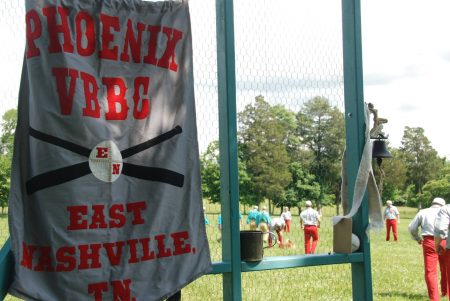 Full disclosure: I’m no sports fan. Not even close. But last year I discovered something that made sports not only tolerable but enjoyable to watch when I discovered vintage baseball. To those who haven’t heard of it, vintage baseball is living history/reenactment for a sport. In our state, vintage base ball (two words as in the past) utilizes the rules, uniforms, and customs of the game as it was played in the 1860s. No cleats, no gloves, just a lot of suspenders and interesting hats as “ballists” bravely face their opponents and cheer on teammates with a resounding “huzzah!” (period-appropriate language is also encouraged). Games are often held at historic sites or on the grounds of historic houses (far enough away to not be worried about the windows), and sometimes also feature period musicians providing entertainment in between plays and vendors of vintage-inspired goods and snacks.
Full disclosure: I’m no sports fan. Not even close. But last year I discovered something that made sports not only tolerable but enjoyable to watch when I discovered vintage baseball. To those who haven’t heard of it, vintage baseball is living history/reenactment for a sport. In our state, vintage base ball (two words as in the past) utilizes the rules, uniforms, and customs of the game as it was played in the 1860s. No cleats, no gloves, just a lot of suspenders and interesting hats as “ballists” bravely face their opponents and cheer on teammates with a resounding “huzzah!” (period-appropriate language is also encouraged). Games are often held at historic sites or on the grounds of historic houses (far enough away to not be worried about the windows), and sometimes also feature period musicians providing entertainment in between plays and vendors of vintage-inspired goods and snacks.
There are over two hundred vintage base ball teams in America, and they even have an annual conference. Our state organization, the Tennessee Association of Vintage Base Ball, is very active, with more than seventy-five matches scheduled this year, March through September. Cities across the state organize teams (sometimes multiple teams in a single city — Nashville has at least three), which then compete both locally and regionally. Each team has its own distinct uniform and characters: players take on a fun nickname and if you read the roster (and glossary of terms), you too can join in when someone shouts “Well fielded, Buttermilk!”
Has vintage base ball converted me into a true sports fan? Not really. I still don’t care about modern baseball, and honestly, I don’t even understand the vintage rules that well. But that’s the point: games are interesting and fun for so many kinds of people who experience them on different levels. Vintage base ball succeeds at engagement in the way so many museums and history institutions want to, by providing something that every visitor can make their own and take from it what they want. Some may want a deep understanding of the game, but others just want a reason to be outside or something screen-free that will entertain their kids for an afternoon. VBB doesn’t try to dictate or control the experience. Similarly, while some historic site visitors want to deeply engage with the subject, read every label, and go on every tour, some are just there for entertainment, relaxation, or something else your site can provide. And that’s okay! We have to trust these visitors to design their own experience, even if it looks wildly different from the one we think they should be there to have.
While we always strive to serve the history superfans, we sell ourselves short if we don’t make an effort to appeal to more casual visitors as well. Rather than assuming non-history folks will never come to our sites, we must ask ourselves what they would find of interest if they did and think how we can make those offerings more obvious to them. And who knows? Those experiences may convert those casual visitors to bonafide history lovers if only we can offer them a way to get started. At every vintage base ball game, I see people who never thought they liked history asking players about life in the 1860s, and people who never thought they liked sports settling in for an afternoon watching a game. But even if those visitors never become history-lovers, we must “show some ginger” (work harder in VBB lingo) to show those casual fans that they’re welcome in the history world, too.





